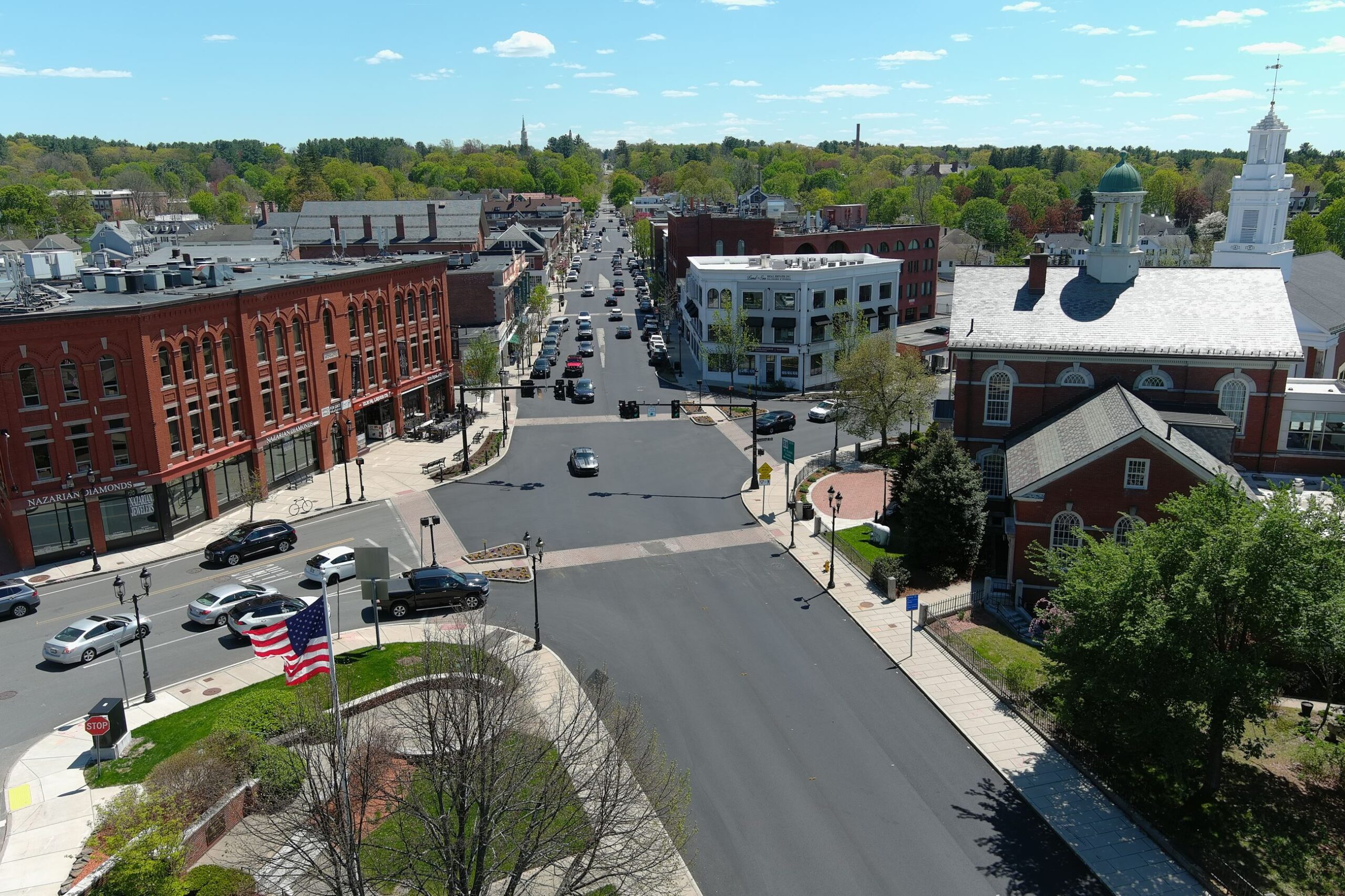After months of talking, town officials are expected to approve an Elm Square redesign by the end of spring, but the proposed options may not do enough to improve community safety, said the father of a girl who died at that intersection and other Andover residents during a public safety forum last month.
“You should be able to walk 0.2 miles in your town without having to fear for your life, your safety,” said Eric Olson at the meeting.
In May 2023, Olson’s 5-year old daughter Sidney was struck and killed by a truck while she was crossing the street on the way to art class. Since then, Andover has hosted four public meetings to discuss plans to re-construct the intersection to improve pedestrian safety.
At the April 10 meeting, Kevin Dandrade, principal of Massachusetts engineering consultant firm TEC Inc, presented two design alternatives, which were updated versions of Alternatives C and D3 from the previous October forum. The proposed changes in both included installing a diagonal crosswalk, removing certain islands, and increasing signalization.
When the floor opened, Andover residents expressed satisfaction with elements of the designs, but raised concern that bike safety and other issues were not addressed properly.
This story was published as part of a collaboration between Andover News and the Department of Journalism in Boston University’s College of Communication. The student journalist is a member of Professor Meghan E. Irons’s Reporting in Depth class.
“Thinking about my kids in a few years, there’s no way I’m letting them ride through the intersection. Ten times out of 10, I’m telling them to pop up on the sidewalk and wait for the pedestrian light,” said Andrew Lewine, a member of the volunteer advocacy group WalkBike Andover, after the meeting.
He said he was disappointed that bike safety seemed like an “afterthought” in the redesigns, which could lead to more issues in years to come.
Neither alternative currently includes formal accommodations for cyclists because, said Dandrade, pedestrian safety “rose to the top” of the priority list. However, he added that town officials are considering implementing a bike box, a space in intersections dedicated for bicycles.
Olson agreed that more should be done to ensure safety for cyclists as well as pedestrians.
“I’m someone who goes through there on a bike all the time, and [I] end up going out on the sidewalk, because it’s terrifying,” he said. He was hit by a pickup truck on another street in town last September, according to reports and his Instagram post.
According to him and Lewine, the largest difference between the two proposed designs is that one of the redesigns, called Alternative #2, would remove all right-turn “slip” lanes from the intersection. They are currently placed at the intersections of North Main and Elm streets, as well as Central Street and Main Street.
Olson explained how these lanes encourage drivers to quickly “zip around” others and turn without pausing.
They also decrease visibility. Sightlines are often blocked by a “wall of cars,” he said.
He criticized the other design called Alternative #1, in which the “dangerous” slip lane between Central and Main would remain. A “no right turn on red” regulatory sign and a “do not block” box would be installed, however.
Dandrade explained how keeping the slip lane could have a “marginal benefit” in preventing congestion and the seeking of alternative routes in surrounding neighborhood streets. He told the attendees that the goal of the engineering firm is to make the intersection “safe for the most vulnerable user,” while maintaining a stable flow of traffic.
But many residents, including Olson, said they did not feel Alternative #1 lived up to this goal.
They said current compliance with stoplights, stop signs, and other regulatory signals is low. Some attendees laughed when Dandrade said the lane would function “if people were nice enough to leave that gap” for the box.
Olson said he supported Alternative #2, adding that any redesign should be seen as a step in resolving the larger issue of the “driving culture” in Andover, where people drive short distances to get around.
He said he was surprised by how much people seem to accept its “human toll.”
“There should just be more outrage, and this stuff should be something that more people are fighting for,” he said.
He has been advocating for two Massachusetts bills that would allow red light cameras and extend safety requirements on large vehicles, which he believes could have saved his daughter’s life.
Town officials estimated that one of the designs will be approved in late spring of this year with construction beginning spring or summer of 2026.
Olson said he appreciates how far the town has come. Still, he wishes he could expedite the process.
“It’s been 702 days since Sid died. And there has been a lot of change, but this stuff is slow and hard work,” he said.

